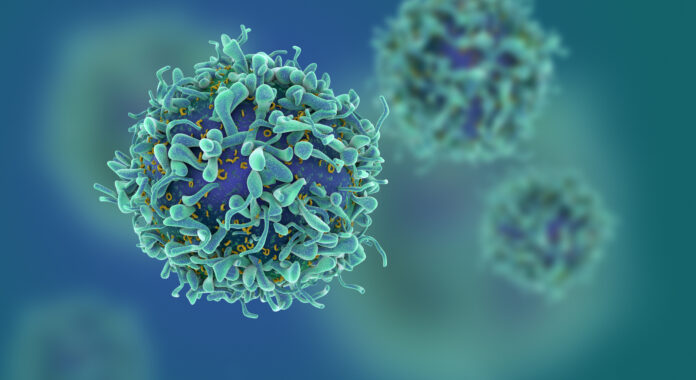
Researchers at the Technical University of Munich (TUM) and the Ludwig Maximilian University (LMU) Hospital Munich have discovered a mechanism by which tumor cells can prevent an immune response by cytotoxic T cells.
It is widely known that certain tumors are capable of tricking the immune system, thereby allowing the cancer to grow unchecked. Current cancer immunotherapies aim to elicit anticancer responses, particularly through T cells. While these immunotherapies work in some patients, they do not work in many others.
In the study published in the journal Nature, the researchers found a way to make existing treatments more effective or to possibly develop new immunotherapies: Tumors can use the messenger substance prostaglandin E2 to influence the early immune response by stem-like T cells.
When a tumor develops, these stem-like T cells move from other areas of the body into the tumor where they proliferate and develop into cytotoxic T cells, which then attack the tumor. However, when tumor cells release prostaglandin E2, it binds to two receptors on stem-like T cells, preventing their proliferation and differentiation into cytotoxic T cells.
Essentially, “the T cell response collapses and the tumor can progress,” explained Jan Böttcher, co-author of the study and research group leader at the Institute of Molecular Immunology at TUM, in a press release.
“Current treatment approaches would probably be more effective if the effects of prostaglandin E2 on stem-like T cells is blocked to enable their unhindered differentiation within tumor tissue,” added Sebastian Kobold, deputy director of the department of clinical pharmacology at the LMU Hospital Munich.
This hypothesis is confirmed by a second study published in Nature, in which researchers at the University Hospital of Lausanne and the Munich team examined the effect of prostaglandin E2 on human tumor tissue. The researchers found that T cells grew better and fought tumor cells more efficiently when they blocked the release of prostaglandin E2.
These findings could also apply to recent immunotherapeutic approaches that use the protein interleukin-2 (IL-2) to stimulate the growth of cytotoxic T cells to kill tumor cells. In their study, the researchers showed that when the tumors release prostaglandin 2 and it binds to the two receptors on stem-like T cells, they are no longer able to react to IL-2.
“We suspect that even the body’s own IL-2 signals may be sufficient to enable T cells to successfully fight cancer once the effects of prostaglandin E2 have been stopped,” explained Kobold.
“We now have a concrete starting point for significantly improving immunotherapies,” concluded Böttcher. “Researchers around the world must now develop strategies to overcome the tumors’ defense. We need to stop the effects of prostaglandin E2—either by preventing tumors from producing the molecule or by making immune cells resistant to it.”













